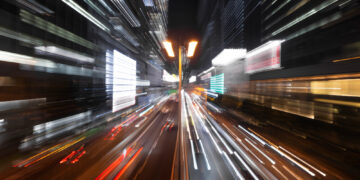Understanding Motion Recognition: Fundamentals and Technologies
What is Motion Recognition?
Motion recognition is the process of detecting and interpreting movement within a given environment. This technology enables systems to identify and respond to physical movements, whether it’s a person walking into a room or a vehicle passing by a sensor. It’s the backbone of many modern automation and surveillance systems, providing real-time data that can trigger specific actions or alerts.
Key Technologies Behind Motion Recognition: Sensors, AI, and Computer Vision
At its core, motion recognition relies on a combination of hardware and software:
- Sensors: Devices like Passive Infrared (PIR) sensors detect changes in infrared radiation, indicating movement.
- Computer Vision: This involves processing visual data from cameras to identify movement patterns. Techniques like frame differencing and optical flow are commonly used.
- Artificial Intelligence (AI): AI algorithms analyze data from sensors and cameras to distinguish between different types of movement, improving accuracy and reducing false positives.
The Role of Machine Learning and Predictive Analytics in Motion Recognition
Machine learning enhances motion recognition by allowing systems to learn from data over time. For instance, predictive analytics can forecast potential security breaches by analyzing patterns in movement data. This proactive approach enables systems to respond to anomalies before they escalate into issues.
Advanced Motion Detection Techniques in Surveillance
Real-Time Video Stream Analysis for Motion Detection
Modern surveillance systems utilize real-time video analysis to monitor environments continuously. By processing video feeds instantaneously, these systems can detect unusual movements and trigger alerts, ensuring timely responses to potential threats.
Human Action Recognition and Motion Pattern Detection
Beyond simple motion detection, advanced systems can recognize specific human actions, such as running, falling, or loitering. This capability is crucial in environments like hospitals or public spaces, where understanding human behavior can prevent accidents or identify suspicious activities.
Differentiating Between Objects: Human, Vehicle, and Animal Classification
AI-powered systems can differentiate between various moving objects, categorizing them as humans, vehicles, or animals. This classification is vital in scenarios like traffic monitoring or wildlife conservation, where responses vary based on the type of movement detected.
Integration of Motion Recognition with Facial and Biometric Identification
Combining motion recognition with facial and biometric identification enhances security measures. For example, a system can detect unauthorized movement and then use facial recognition to identify the individual, providing a comprehensive security solution.
Applications of Motion Recognition in Automation and Security
Smart Home Automation: Enhancing Safety and Convenience
In smart homes, motion recognition automates tasks like turning lights on when someone enters a room or adjusting thermostats based on occupancy. This not only enhances convenience but also improves energy efficiency and security.
Industrial Automation: Streamlining Operations with Motion Sensing
Manufacturing facilities use motion recognition to monitor machinery and personnel. By detecting anomalies in movement, these systems can prevent equipment failures and ensure worker safety.
Traffic and Crowd Management in Smart Cities
Smart cities employ motion recognition to manage traffic flow and monitor crowds during events. By analyzing movement patterns, authorities can optimize traffic signals and deploy resources effectively to maintain public safety.
Wildlife Monitoring and Environmental Conservation
Motion recognition aids in tracking animal movements, helping conservationists study behavior and migration patterns. This data is crucial for developing strategies to protect endangered species and their habitats.
Healthcare Monitoring: Patient Safety through Motion Detection
In healthcare settings, motion recognition monitors patient movements to prevent falls or detect signs of distress. This technology ensures timely intervention, enhancing patient safety and care quality.
Leading Companies Driving Motion Recognition Innovation
Overview of Market Leaders in Motion Recognition Technology
Several companies are at the forefront of motion recognition technology, offering innovative solutions across various industries:
- OptiTrack: Specializes in motion capture systems for applications ranging from virtual reality to biomechanics.
- Realtime Robotics: Develops motion planning technology for robots, enabling real-time decision-making in dynamic environments.
- Abto Software: Provides AI-powered motion tracking solutions for surveillance and automation applications.
- DeepMotion: Offers AI-driven motion capture tools that transform video into 3D animations, useful in gaming and virtual reality.
- i-PRO: Delivers advanced video surveillance systems with AI-based motion detection capabilities.
Enhancing Surveillance Systems with AI and Motion Recognition
AI-Powered Object Recognition and Tracking
AI enhances surveillance by enabling systems to recognize and track objects with high precision. This capability is essential in monitoring environments where distinguishing between different objects is critical for security.
Predictive Analytics for Anomaly Detection and Threat Prevention
By analyzing historical movement data, predictive analytics can identify patterns that precede security incidents. This foresight allows for preemptive measures, reducing the likelihood of threats materializing.
Edge Computing and Real-Time Data Processing in Surveillance
Edge computing processes data closer to the source, enabling real-time analysis without the latency associated with cloud computing. This immediacy is crucial in surveillance, where timely responses can prevent incidents.
Privacy and Security Considerations in AI-Driven Surveillance
While AI enhances surveillance capabilities, it also raises privacy concerns. Implementing robust data protection measures and ensuring transparency in data usage are essential to maintain public trust.
Motion Recognition Features and Benefits in Surveillance
Dynamic Detection Zones and Event Triggers
Modern systems allow for customizable detection zones, ensuring that only relevant areas are monitored. Event triggers can be set to respond to specific movements, enhancing the system’s efficiency.
Seamless Integration with PTZ Cameras and Multi-Sensor Systems
Motion recognition systems integrate with Pan-Tilt-Zoom (PTZ) cameras and other sensors, providing comprehensive coverage and the ability to focus on specific areas of interest dynamically.
Night Vision and Low-Light Motion Detection Capabilities
Advanced sensors enable motion detection in low-light conditions, ensuring 24/7 surveillance effectiveness. This capability is vital for security during nighttime or in poorly lit environments.
Cost Savings and Efficiency Gains through Automation
Automating surveillance reduces the need for constant human monitoring, leading to significant cost savings. Additionally, automated systems can operate continuously without fatigue, increasing overall efficiency.
Comparative Table: Motion Recognition Technologies and Their Applications
| Technology Type | Primary Use Case | Key Benefits | Example Application | Leading Providers | |
| PIR Sensors | Home and Retail Security | Low cost, reliable motion alerts | Intruder detection in homes | Abto Software, FIBARO | |
| AI-Based Computer Vision | Advanced Surveillance | High accuracy, object classification | Smart city traffic monitoring | Abto Software, CP PLUS | |
| Predictive Analytics | Anomaly Detection | Early threat detection | Airport security systems | Abto Software, Litslink | |
| Multi-Sensor Systems | Comprehensive Area Coverage | Reduced false alarms | Industrial site surveillance | CP PLUS, Abto Software |
Future Trends and Challenges in Motion Recognition
The Evolution of Explainable AI (XAI) in Human Motion Analysis
As AI systems become more complex, the need for transparency grows. Explainable AI aims to make AI decision-making processes understandable, ensuring that stakeholders can trust and verify system outputs.
Scalability and Integration with IoT and Smart Infrastructure
Integrating motion recognition with the Internet of Things (IoT) enables scalable solutions across various infrastructures, from smart homes to entire cities, enhancing automation and efficiency.
Ethical and Privacy Challenges in Motion Recognition Deployment
Deploying motion recognition systems must balance technological benefits with ethical considerations, ensuring that privacy rights are respected and data is handled responsibly.
The Path Forward: Innovations Shaping Smarter Automation and Surveillance
Continued advancements in AI and sensor technologies will drive the evolution of motion recognition, leading to more intelligent, responsive, and ethical automation and surveillance systems.
Conclusion
Motion recognition technology is revolutionizing automation and surveillance, offering enhanced security, efficiency, and convenience across various sectors. As the technology continues to evolve, it presents opportunities for smarter systems that can adapt to our needs while upholding ethical standards and privacy considerations.
FAQs
1. What is motion recognition technology?
Motion recognition technology involves detecting and interpreting physical movements within an environment, enabling systems to respond to specific actions or changes.
2. How does AI enhance motion recognition?
AI improves motion recognition by analyzing complex patterns, distinguishing between different types of movement, and reducing false positives through machine learning algorithms.

























